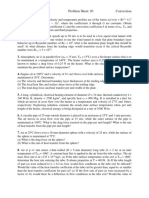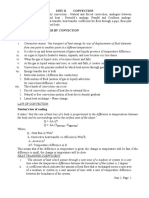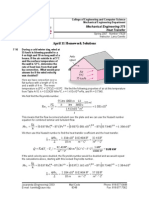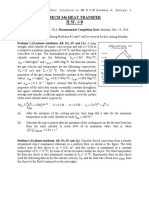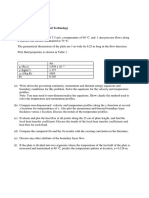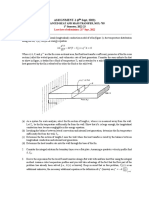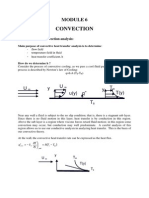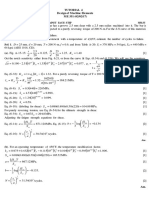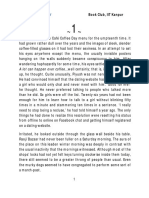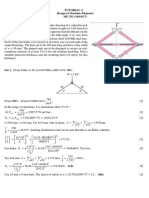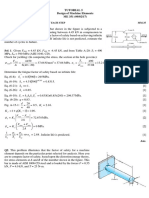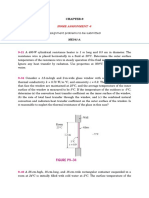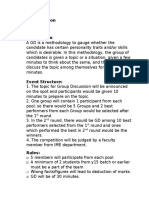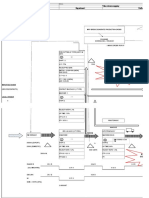0% found this document useful (0 votes)
198 views2 pagesHome Assignment-5 (Practice Problem) Chapter-6
The document discusses convection heat transfer concepts including:
1) Calculating the rate of heat loss from a walking person using the convection heat transfer coefficient equation and given parameters like surface area and temperature.
2) Similarity solutions in partial differential equations can be used to model convection problems, where a similarity variable allows the equations to take a self-similar form.
3) Deriving relationships for maximum fluid temperature, its location, and heat flux by solving the continuity, momentum, and energy equations for fluid flow between parallel plates with one moving plate.
Uploaded by
Rounak MajumdarCopyright
© © All Rights Reserved
We take content rights seriously. If you suspect this is your content, claim it here.
Available Formats
Download as DOCX, PDF, TXT or read online on Scribd
0% found this document useful (0 votes)
198 views2 pagesHome Assignment-5 (Practice Problem) Chapter-6
The document discusses convection heat transfer concepts including:
1) Calculating the rate of heat loss from a walking person using the convection heat transfer coefficient equation and given parameters like surface area and temperature.
2) Similarity solutions in partial differential equations can be used to model convection problems, where a similarity variable allows the equations to take a self-similar form.
3) Deriving relationships for maximum fluid temperature, its location, and heat flux by solving the continuity, momentum, and energy equations for fluid flow between parallel plates with one moving plate.
Uploaded by
Rounak MajumdarCopyright
© © All Rights Reserved
We take content rights seriously. If you suspect this is your content, claim it here.
Available Formats
Download as DOCX, PDF, TXT or read online on Scribd
/ 2











